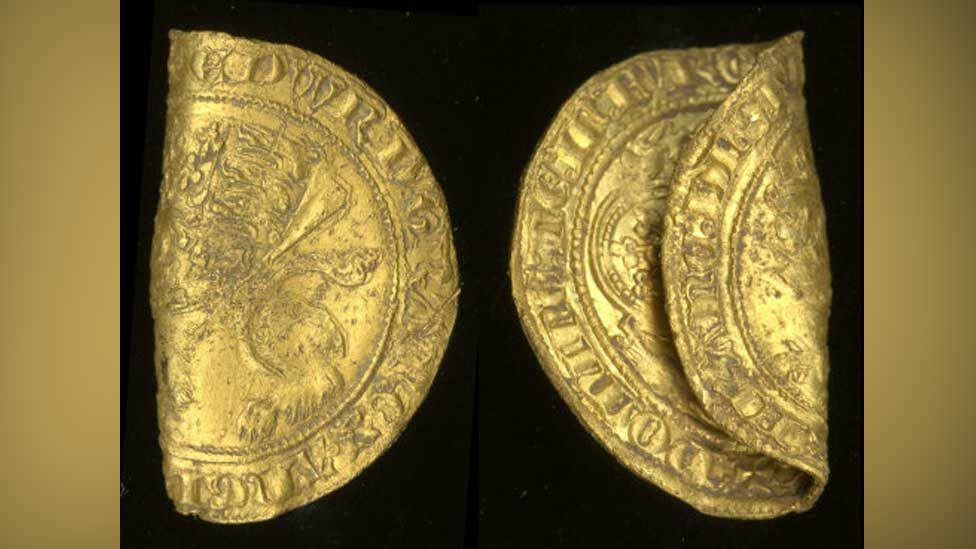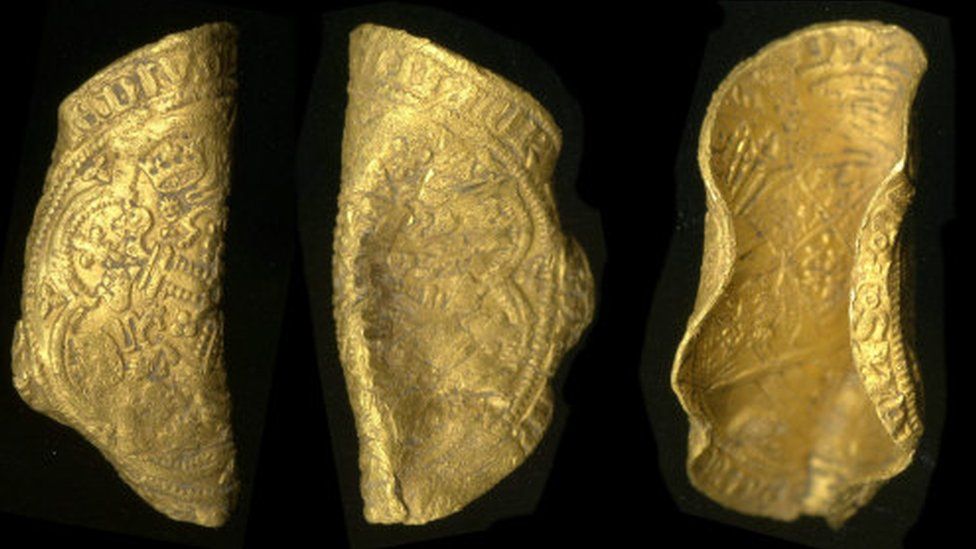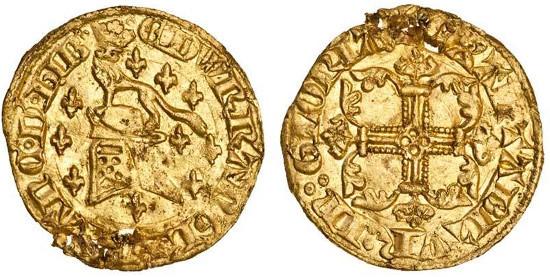
Detectorist finds extremely rare gold coins from the Black Death
Categories: Minting - Numismatics , Nálezy nejenom s detektorem ve Velké Británii a Irsku
Two unique medieval gold coins from the mid-14th century were discovered using a metal detector near Reepham in Norfolk County back in October 2019, however archaeologists from PAS presented the find after its evaluation this week. They are rare Edward III coins from the harsh times when Europe was decimated by plague. There are only 3 similar examples in English collections.
The most interesting of the two coins is the half-florin (also known as the "leopard coin"), which was struck from January to July 1344. However, this coin was considered "unsatisfactory" because the mint fees were too high and the value assigned to leopard coins overvalued gold over silver. Edward III later tried to remedy this by introducing a new currency. He issued coins from July 1344 until 1351, when the second of the detector coins was minted. This coin is known as the "golden nobleman". It weighed nearly 8 grams, more than double the weight of the 3.5 gram leopard coin.
"It seems likely that both coins entered the country at the same time - either as a loss or part of a hidden hoard," said a statement from PAS, run by the British Museum. The coins have been folded in half, but are otherwise in good condition, with minor abrasions that were probably caused by agricultural activity. The leopard coin is 23 carats, or very pure, 96% gold.
"The discovery of the leopard coin is particularly remarkable, given that these coins were actually minted in very small numbers and almost none have survived," PAS liaison officer Helen Geake told the BBC. "There are only three similar examples in public museums today. Whoever owned these two coins was in high society," she added. "At the time, the value of the coins was equivalent to 12,000 British pounds (about 356,000 crowns) today. After the Norman Conquest in the 11th century, the only coins in England were silver pennies. Later, Edward III decided to reintroduce the first gold coins since the end of the Anglo-Saxon era - no one knows why."
However, Edward III's new currency did not catch on with the public. Perhaps because one penny was the equivalent of a day's wages. Apparently few people used them because their face values were too high. However, new findings show that leopard coins have been in circulation longer than previously thought. One possibility may be that the Black Death came to England in the late 1440s and killed at least a third of the population. Probably at that time gold coins represented a kind of investment for a rainy day and it was not wise to dispose of them, nor did the authorities withdraw them from circulation.
If the coroner judges the find to be a treasure - under the terms of the Treasure Act 1996, it probably is (a find older thanover 300 years old, precious metal, more than one coin), then he will determine the market value of the coins, which will be split between the finder and the landowner. The reward can be very high indeed - the leopard coin is considered to be of national significance. A similar one was valued at a London auction in 2015 at $61,500 - at the then exchange rate of about 1.5 million crowns.
Roman Nemec



Leopard coin from the 2015 London auction with a value of 1.3 million crowns
Sources: livescience.com, bbc.com, thetimes.co.uk
The article is included in categories:



